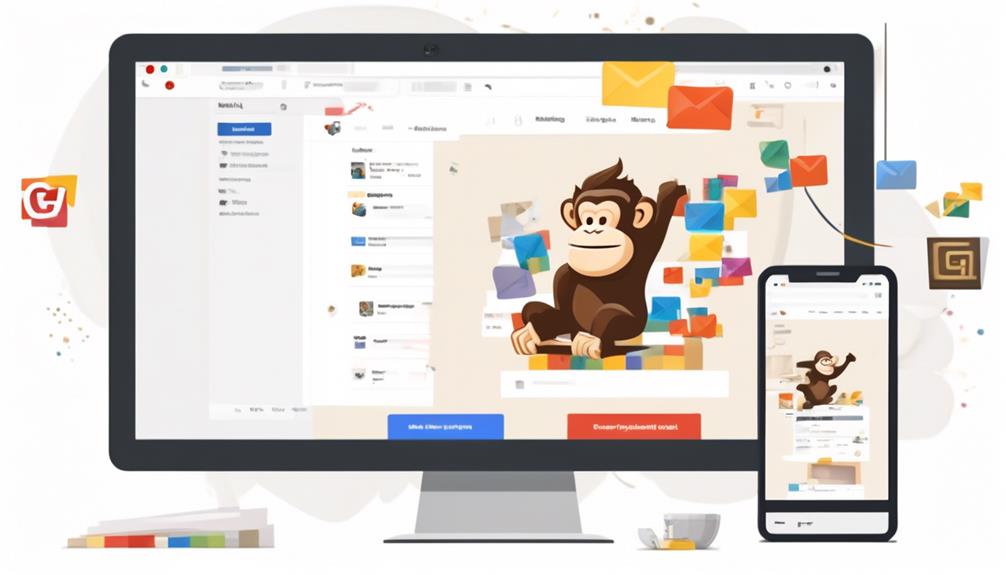Would you like to create attractive and personalized email communications in Salesforce?
HTML email templates offer a powerful solution for designing and customizing emails to make a lasting impact on your audience. From layout options to personalized merge fields, HTML email templates provide a wealth of possibilities for crafting engaging email content.
But how exactly can these templates be leveraged to optimize your email communications and drive better engagement?
Let's explore the ins and outs of HTML email templates in Salesforce, and uncover the best practices for leveraging this powerful tool to elevate your email marketing efforts.
Key Takeaways
- Salesforce offers various types of HTML email templates, including Classic, HTML with Classic Letterhead, Custom HTML, Visualforce, and Lightning Email Templates.
- HTML email templates in Salesforce have some limitations, such as limited merge fields, challenges in complex template design, and limitations in implementing dynamic content.
- Users have the flexibility to switch between Salesforce Lightning and Classic interfaces based on their preferred environment for different tasks.
- When importing HTML email templates in Salesforce, compatibility, thorough testing, and utilizing Salesforce's Help and Training resources are essential for seamless integration and professional appearance.
Types of Html Email Templates in Salesforce
When creating HTML email templates in Salesforce, we have the flexibility to choose from various types, each serving different customization needs and design elements.
The Classic Email template offers a simple text format without HTML formatting or design elements, suitable for basic communication.
For more customization, the HTML with Classic Letterhead template allows us to incorporate HTML code with options to customize the email layout, fonts, colors, and design elements.
If we require fully customized templates with complex visual elements, the Custom HTML templates provide the flexibility to utilize HTML and CSS.
Additionally, the Visualforce templates support the use of the Visualforce markup language, enabling highly customizable content, dynamic data, and sophisticated email layouts.
Lastly, the Lightning Email Templates offer an Enhanced Letterhead option for standardizing the header and footer, along with advanced customization choices.
Understanding the differences between these types of HTML email templates is crucial in selecting the most suitable option for our specific communication and branding needs within the Salesforce platform.
Limitations of Html Email Templates in Salesforce

As we explore the functionalities of HTML email templates in Salesforce, it's important to consider the potential limitations that may impact our customization and design efforts. While HTML email templates offer great flexibility and customization options, there are certain limitations to be mindful of when utilizing them in Salesforce.
| Limitation | Description | Workaround |
|---|---|---|
| Limited Merge Fields | HTML email templates in Salesforce have limitations on the type and depth of merge fields that can be used. | Utilize formula fields or custom code to manipulate data before it's inserted into the template. |
| Complex Template Design | Creating intricate designs with extensive CSS and JavaScript may be challenging due to the limitations of the Salesforce HTML editor. | Simplify the design and utilize external resources for complex elements if necessary. |
| Dynamic Content | Implementing dynamic content based on recipient data can be limited within HTML email templates. | Use Salesforce's personalization features and dynamic content blocks to achieve some level of personalization. |
Understanding these limitations will allow us to make informed decisions when designing and customizing HTML email templates in Salesforce. While these limitations may present challenges, there are workarounds and alternative approaches to achieve the desired outcomes.
Switching Between Salesforce Lightning and Classic
Switching between Salesforce Lightning and Classic interfaces provides users with the flexibility to adapt to their preferred environment for various tasks, enhancing their overall user experience.
When it comes to creating an email template in Salesforce, this flexibility becomes invaluable. For instance, if we need to create a template with complex HTML and styling, Salesforce Lightning's modern interface may offer a more intuitive experience. On the other hand, if we're working on managing contact information or performing routine tasks, the familiarity of the Classic interface might be more efficient.
By seamlessly switching between the two interfaces, we can leverage the strengths of each platform to accomplish our tasks more effectively.
Moreover, when dealing with contact information, the ability to switch between Lightning and Classic can be particularly beneficial. Lightning's dynamic and responsive interface can streamline the process of updating and managing contact details, while Classic's straightforward layout might be preferable for viewing or exporting contact information in bulk.
This adaptability empowers us to work in a manner that aligns with our specific needs and preferences, ultimately enhancing our productivity and user experience.
Importing Html Email Templates in Salesforce

Importing HTML email templates in Salesforce allows us to create visually compelling and personalized email communications using custom HTML code. When importing these templates, it's essential to ensure that they're compatible with the Salesforce platform for seamless integration.
Once imported, these templates can be used for sending emails to customers, prospects, or internal stakeholders. It's crucial to test email templates thoroughly to verify their rendering across various email clients and devices, ensuring a consistent and professional appearance.
Salesforce provides comprehensive Help and Training resources for importing and utilizing HTML email templates effectively. These resources offer guidance on best practices for importing, customizing, and managing templates within the platform. Additionally, they provide insights into troubleshooting any issues that may arise during the import process or template usage, empowering users to leverage HTML email templates to their fullest potential.
Can I Use Adobe XD to Create Email Templates for Salesforce?
Yes, you can use Adobe XD to create email templates for Salesforce. The stunning email templates creation tutorial will guide you through the process, helping you design and customize templates that are compatible with Salesforce. With Adobe XD’s features, you can create visually appealing and responsive email templates seamlessly.
Testing and Sending Html Email Templates in Salesforce
After importing HTML email templates in Salesforce, the next crucial step is to thoroughly test and send them to ensure their proper rendering and functionality.
Testing HTML email templates in Salesforce is essential for identifying any formatting or display issues. It allows for ensuring the correct appearance and functionality of the template across different email clients and devices.
Salesforce provides a test email feature specifically designed for sending HTML email templates to designated recipients, enabling users to verify the template's appearance and functionality before sending it out to a wider audience. This testing process is crucial in maintaining a professional and consistent brand image.
Sending HTML email templates in Salesforce involves sending test emails to verify their appearance and functionality. By thoroughly testing and sending HTML email templates, users can ensure that the templates are displayed correctly and function as intended, providing a seamless and professional experience for recipients.
It's important to meticulously test and send HTML email templates to guarantee that they meet the desired standards and effectively convey the intended message.
Frequently Asked Questions
How Do I Create an HTML Email Template in Salesforce?
We create HTML email templates in Salesforce by navigating to the Email Templates section and selecting the New Template option.
Then, we choose the HTML (using Letterhead) option and input our HTML code.
After that, we can use merge fields and conditional logic to personalize the content.
Can Salesforce Send HTML Emails?
Yes, Salesforce can send HTML emails. We customize visually appealing emails using HTML code.
Conditional logic like IF, THEN statements, personalizes email content based on specific conditions. We use {!IF(condition, value_if_true, value_if_false)} syntax for this.
Salesforce offers various types of email templates, each with its own features and limitations. Classic Email Templates and Lightning Email Templates are examples.
How Do I Use HTML as an Email Template?
We use HTML as an email template by crafting visually engaging and customized emails using HTML code.
We can personalize email content based on specific conditions by adding conditional logic using syntax like {!IF(condition, value_if_true, value_if_false)}.
Additionally, Salesforce provides the CASE statement for implementing conditional logic.
It's important to be aware of limitations and restrictions when creating HTML email templates in Salesforce to ensure they function as intended.
How Do I Write HTML Code in Salesforce?
We write HTML code in Salesforce by navigating to the Setup menu and selecting the appropriate option for creating or editing HTML content.
We utilize the HTML editor to input and customize our code, ensuring it aligns with best practices and meets our specific requirements.
Can the Techniques Used for Creating Email Templates in Mailchimp be Applied to Salesforce?
Yes, the techniques used for creating stunning email templates in Mailchimp can be applied to Salesforce as well. By following a stunning email templates creation tutorial, users can learn how to design visually appealing and effective email templates that can be used across various platforms, including Salesforce.
Conclusion
In conclusion, HTML email templates in Salesforce offer a delightful opportunity for users to navigate the intricate world of email design with ease. The limitations only serve to enhance our creativity, and the process of switching between platforms is like a charming game of musical chairs.
Importing and testing our masterpieces is a thrilling adventure, leaving us on the edge of our seats as we send out our beautifully crafted emails.
Cheers to the art of email template creation!









